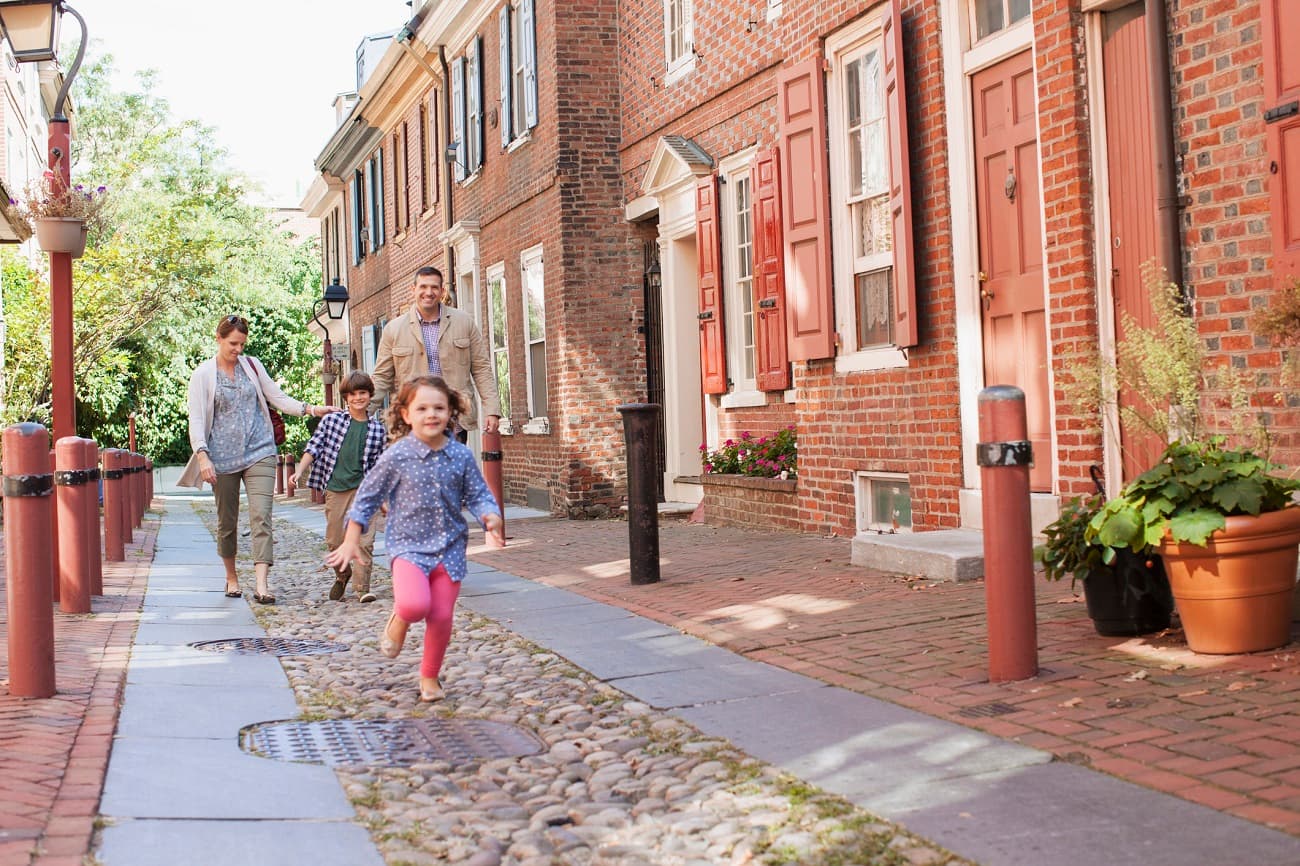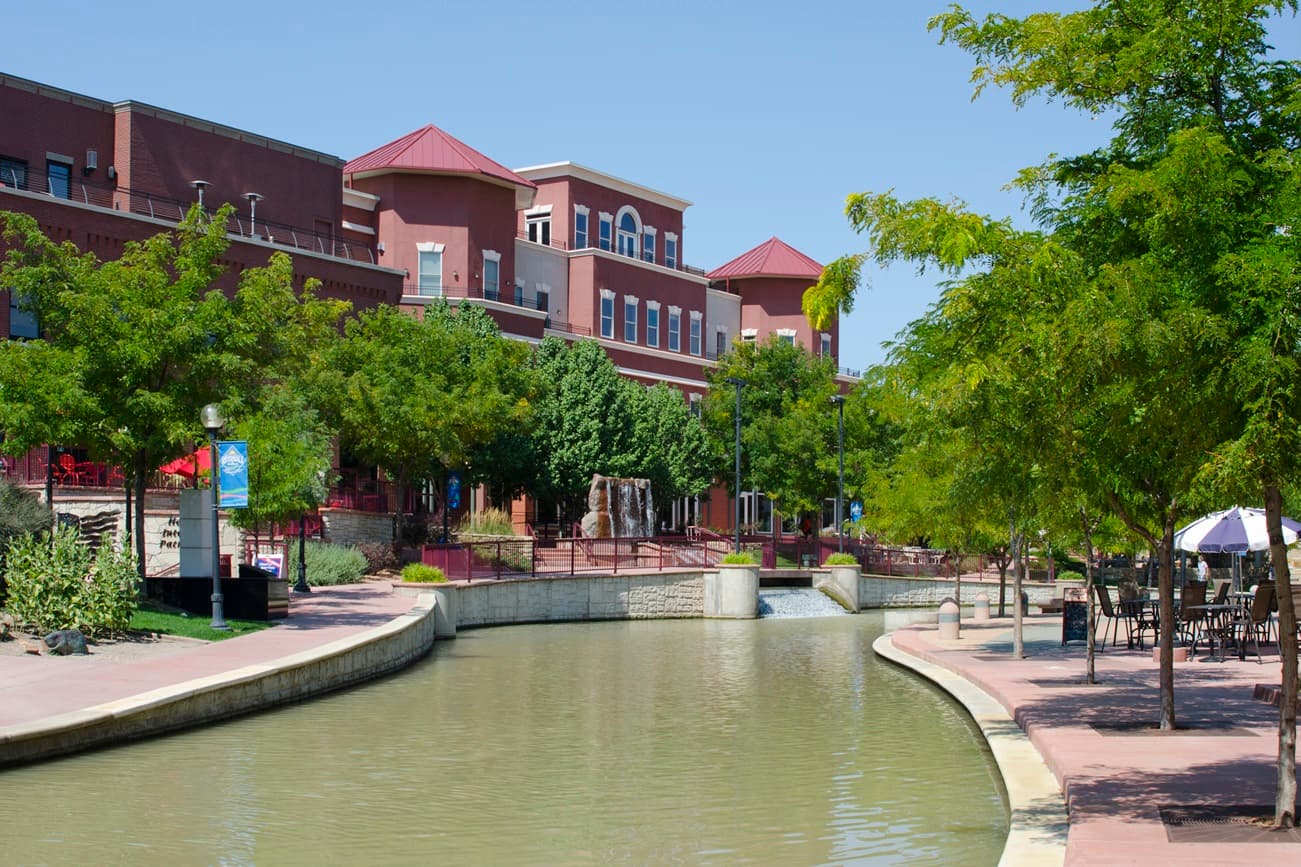A 2023 NATIONAL ASSOCIATION OF REALTORS® (NAR) survey found the desire for walkability when choosing a home is consistent and increasing. “The Community & Transportation Preferences Survey” is a large national poll taken every other year for the past 10 years to gauge people’s preferences about their home location or potential location and community attributes they find desirable.
“The results are very consistent,” said Hugh Morris, manager of NAR’s smart growth program, which publishes On Common Ground and provides support to communities in their smart growth efforts. The margin of error is small because more than 2,000 people were surveyed. The poll covers 65 percent of the U.S. population in the top 50 metro areas.
The top takeaways:
- Everyone wants access to highways. That’s a higher priority for urban residents than rural ones.
- People want public transit nearby — 50 percent of urban residents and 29 percent of suburban residents said that was important.
- Generation Z is more willing to pay more to live in a walkable community. They also want to live near public transit more than other generations.
- Millennials want community leaders to provide convenient alternatives to driving, such as walking, biking and public transportation.
- Baby boomers have a greater interest in traveling by car, whether by choice or because health problems or where they live prevent them from using other transportation modes.

On the walkability question, in 2015, half of those surveyed said they would prefer a smaller house and yard if it was easier to walk to amenities. Eight years later, that has risen to 56 percent.
“As people budget, there’s nothing cheaper than walking,” said Morris. “When people feel squeezed income-wise, walking or biking are substantially less expensive than owning a car.
“Younger folks are more likely to live in situations where they can walk, bike, take transit, rent a scooter, whether by choice or necessity.”
Does this mean transportation preferences can be broken down by generation? Like everything in transportation and housing, it’s not that simple.
Aging Population With Inadequate Choices
In 10 years, the United States will have more people over 65 than under 18, said Rodney Harrell, vice president family, home and community for AARP. Despite this, “we’ve developed entire systems based on a society full of younger folks.
“The transportation system in America since World War II has been focused on the automobile,” Harrell said. “If you have a car and can drive a car, you have access to what you need.” But younger people may not want or be able to afford a car, and older people may no longer be able to drive.
Yet “almost no one in this country has access to high-quality transit,” said Beth Osborne, director of Transportation for America, a nonprofit group that is part of Smart Growth America. “Demand has only grown over the past several years.”
AARP research has found that people of all ages want a variety of transportation options. That goes for the old, the young and caregivers of older people. AARP’s livable communities concept is based on options. “One size doesn’t work for everybody,” said Harrell.
The AARP Livability Index was created to measure a neighborhood in seven categories, including transportation. “Transportation options that connect people to social activities, jobs and medical care, and offer convenient, healthy, accessible and low-cost alternatives to driving are paramount to supporting all community members,” AARP states.

Transportation options include factors such as how close public transit is and how often it runs, and traffic congestion since most people drive, Harrell said. The index also measures ADA-accessible stations and vehicles, walkability, household transportation costs, congestion, fatal car crashes, speed limits, state human services transportation coordination councils, state driver volunteer policies, and state and local Complete Streets policies. Complete Streets policies “offer pedestrians, cyclists, drivers, and transit users of all ages and abilities with safe and convenient travel choices,” according to the AARP website. It’s back to options for a variety of users.
The cost of transportation should be measured not just in dollars but in hours and the person’s time, said Osborne of Transportation for America. “Especially when you’re young, you don’t want to spend as much time to travel around.”

But Harrell resists the generational dynamic. “It’s more about life circumstance—people who don’t drive, for whatever reason, or choose not to, need those transportation options,” he said.
Transportation systems don’t exist in isolation, Harrell said. To have access to different types of transportation, people need more housing choices than single-family homes in a cul-de-sac. When he talks to people around the country, he often encounters an individual who can no longer drive, who may be widowed and does not live near transit.
“They’re stuck,” said Harrell. Options for all generations in various life circumstances is critical.
Streets Can Be Designed for Walkability
That may be one reason why those polled by the NAR express an increasing interest in walkability. But with the nation’s post-World War II emphasis on car-friendly design, walkability sometimes gets short shrift.
“If we design for those driving, those walking are going to have to walk farther out of their way to walk,” said Osborne. “That’s not walkability.”
But, she said, if streets are designed for the most vulnerable—which may mean pedestrians—they work for everyone. It may mean slower moving traffic where drivers have the ability to see dangers and pedestrians. A more constant average speed rather than drivers speeding up and slowing down is safer for both drivers and pedestrians.

Smart Growth America’s “Dangerous by Design 2024” found that 7,522 people were struck and killed while walking in 2022, an average of more than 20 per day. Black and Indigenous Americans, older adults, and people walking in low-income communities die at higher rates and face more risk than Americans as a whole.
The National Complete Streets Coalition at Smart Growth America, of which NAR serves on the Steering Committee, has funded a series of quick-build demonstration projects to show ways to improve alternative modes of transportation, whether walking, bicycling or something else. The low-cost, temporary projects demonstrate different options for all.
“They involve the public,” said Osborne. “It’s better to interact with a physical product than a sketch on a piece of paper.” Some of the projects cost as little as $14,000. In one example, Tennessee worked on making very visible pedestrian crossings that drivers could see. That all the roads involved were owned and maintained by the state DOT added an extra layer of bureaucratic difficulty to the project, but demonstrated it could be done.
In another demonstration project, South San Francisco built temporary bike lanes, protecting them with buffers and testing them along a 2,500-foot stretch. With the buffered design, the bike lanes got more use, and drivers knew where to look, Osborne said. The temporary lanes were not as expensive as permanent bike lanes would be, and they helped people understand that experimenting with different designs produces a better final design.
The quick-build projects are a way to showcase different ideas to promote multi-modal transportation and make walking safer.
Public Transit: Changes Since COVID
Transit systems saw a big drop in ridership during the pandemic lockdown. At first, no one but essential workers, such as hospital staff, was going anywhere. In an effort to avoid infection, people were working from home if they could, or, if they had to go to their workplace, they were more likely to drive if they could.

One point highlighted by the pandemic, said Osborne: “Transit in our country is designed for the workplace and almost exclusively the workplace. One way we’ve been able to sell transit is that it makes more space for the driver.”
Since the height of the pandemic, “in many cases, commuting patterns have changed,” said AARP’s Harrell. “Transportation systems have moved away from a focus on rush hour, offering service all day instead.” It’s a silver lining after a very difficult period. “We’re starting to think differently about transportation options.”
It’s not just commuting patterns, but the way people travel in general that has changed, said Osborne. “Transit systems that are able to accommodate the way people travel today will be successful.”

One aspect that could change is to make better use of information management systems, said Osborne. “I can go on Google Maps and figure out every way to travel to my destination. You could take that information and use it to plan transportation. Instead, we’re using 1950s technology.
“The state DOT can measure all modes of travel to evaluate a project for funding and access to non-work destinations, such as the grocery store, bank, schools and medical care.” That provides better information on options for all of life’s essential needs.
Transportation and Housing Closely Linked
The most important priority for transportation departments now should be to focus on meeting a wide range of needs for all residents, Harrell said. “If we focus on what kinds of city designs give us the most options, it’s communities where the grocery store and pharmacy are nearby, and you can walk or drive or take the bus to them.”
Such neighborhoods are good for all, but tend to be expensive, so the next goal should be to enhance housing affordability, Harrell added. “There are many approaches to try to bring costs down in areas close to transit, such as tax credits. When I talk to folks in subsidized housing near transit, you can see the difference in their lives.”
And, communities of all sizes can work toward healthier, accessible transportation options that work for all generations and life stages. “It’s not just big cities,” he said. “A small town might have a town center. Every community can work toward it.”
Harrell explained, transportation systems don’t sit in isolation. It’s important to look at the communities and their land-use and zoning regulations.
“I want to believe that in 10 years we could get more used to multimodal transportation,” said NAR’s Morris. “Everything that works in Europe could work here. Car ownership is only getting more expensive.”
Local REALTORS® Pursue Transit Study, Walkability
NAR’s smart growth program also assists local communities that are looking to expand or improve transportation options. Two local REALTOR® associations used NAR Smart Growth grants to help push for an expanded bus system and a more walker-friendly design in their communities.
Working with other community groups, the Greater Greenville (SC) Association of REALTORS® (GGAR) used its grant to hire an economist who showed the economic impact of fully funding the bus system over 20 years. The study showed the long-term funding would substantially help wages and jobs in the Greenville metro areas.
Did the study result in more funding? “Yes and no,” said Chris Bailey, chief executive officer of GGAR. “It showed the impact of well-funded transit. [But] transit is not a huge priority here in South Carolina.” The city was easy to convince, but county council members from more rural areas didn’t want to spend the money. The council approved funding the bus system for two years, not for the 20 years that GGAR and other groups wanted.
“With grants, it’s about long-term awareness, too,” said Bailey. “It raises the perception that we’re a resource.” Now, if someone needs information on transit or other community issues, they can call their local REALTORS®.
Transit is important to REALTORS®. “We learned a long time ago, we’re not just selling rooftops and commercial spaces, we’re selling a community,” said Bailey. “If the quality of life improves, people want to move here.”
Bus ridership had already risen 17 percent when the economist did the study in 2022. “If we can expand the bus system, demand is there,” said Bailey. “People want to use the bus system to get to work and more options are available to residents who call Greater Greenville home.”
In St. Paul, REALTORS® worked to make crosswalks more prominent. The St. Paul Area Association of REALTORS® (SPAAR) used an NAR Smart Growth grant to study how to make crosswalks in the community of Faribault, Minn., more prominent and safer. A park and trail system are connected to downtown, but it crosses a state highway, said Becky Wegscheid, government affairs director with SPAAR. When the state redid the highway a few years ago, the city wasn’t consulted.
Now, to cross the highway, pedestrians need to walk to an island median as cars speed by them. Consultants hired by the REALTORS® looked at where along the highway the best and most pragmatic use of crosswalks should be, said Wegscheid. They need to be clearer and more eye-catching than they are now to make them safer.
The next steps, which require approval from the city council, would be to add more prominent signs showing the crosswalks and perhaps add different types of crosswalks. An information campaign is also needed to let people know about any changes to the crosswalks. SPAAR will likely remain engaged as the city makes the final decision.
“REALTORS® are interested in anything regarding livability that makes communities safer,” said Wegscheid. “Walkability is something our area has been pretty engaged with.”
Citizens of all ages should have access to transportation options and safe routes.
Whether walking, driving, using transit, bicycling or riding a scooter, citizens of all ages should have access to a variety of transportation options and safe routes that make sense for them at their particular circumstance and needs at different points in life.











